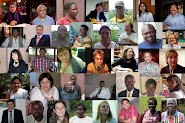
I am spending the holiday break in Goa, India. We are staying in a rural area named Santana. I am pecking this out on a BlackBerry while looking out across miles of marsh, populated with frogs, swarms of birds, grazing buffalo, roving pigs, and wandering country chicken.
What's remarkable to me is that this remote area -- where there is no trash pick-up and only occassional bus service -- is quite accessible via mobile technology. While I can't buy the local paper without getting to a nearby town, I can read the New York Times just as well as anyone in New York City.
In India, people are starting to use communications technology to overcome hurdles. College courses are telecast from major universities to hubs around the country where students attend remotely, farmers are making selling decisions based on market data via Internet links, and in traffic-choked cities, telecommuting is becoming a norm. In other parts of the world, banking and money transfer services are finally feasible for millions of rural people via cell phones.
What is the potential of these technologies to make leadership development and resources more accessible? CCL is exploring a number of possibilities along this axis. I anticipate that in years to come more of us will be able to live, work, and learn just fine in places like Santana, sitting as I am right now under a coconut tree listening to the chirp of the grasshoppers.
What's remarkable to me is that this remote area -- where there is no trash pick-up and only occassional bus service -- is quite accessible via mobile technology. While I can't buy the local paper without getting to a nearby town, I can read the New York Times just as well as anyone in New York City.
In India, people are starting to use communications technology to overcome hurdles. College courses are telecast from major universities to hubs around the country where students attend remotely, farmers are making selling decisions based on market data via Internet links, and in traffic-choked cities, telecommuting is becoming a norm. In other parts of the world, banking and money transfer services are finally feasible for millions of rural people via cell phones.
What is the potential of these technologies to make leadership development and resources more accessible? CCL is exploring a number of possibilities along this axis. I anticipate that in years to come more of us will be able to live, work, and learn just fine in places like Santana, sitting as I am right now under a coconut tree listening to the chirp of the grasshoppers.




















